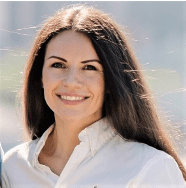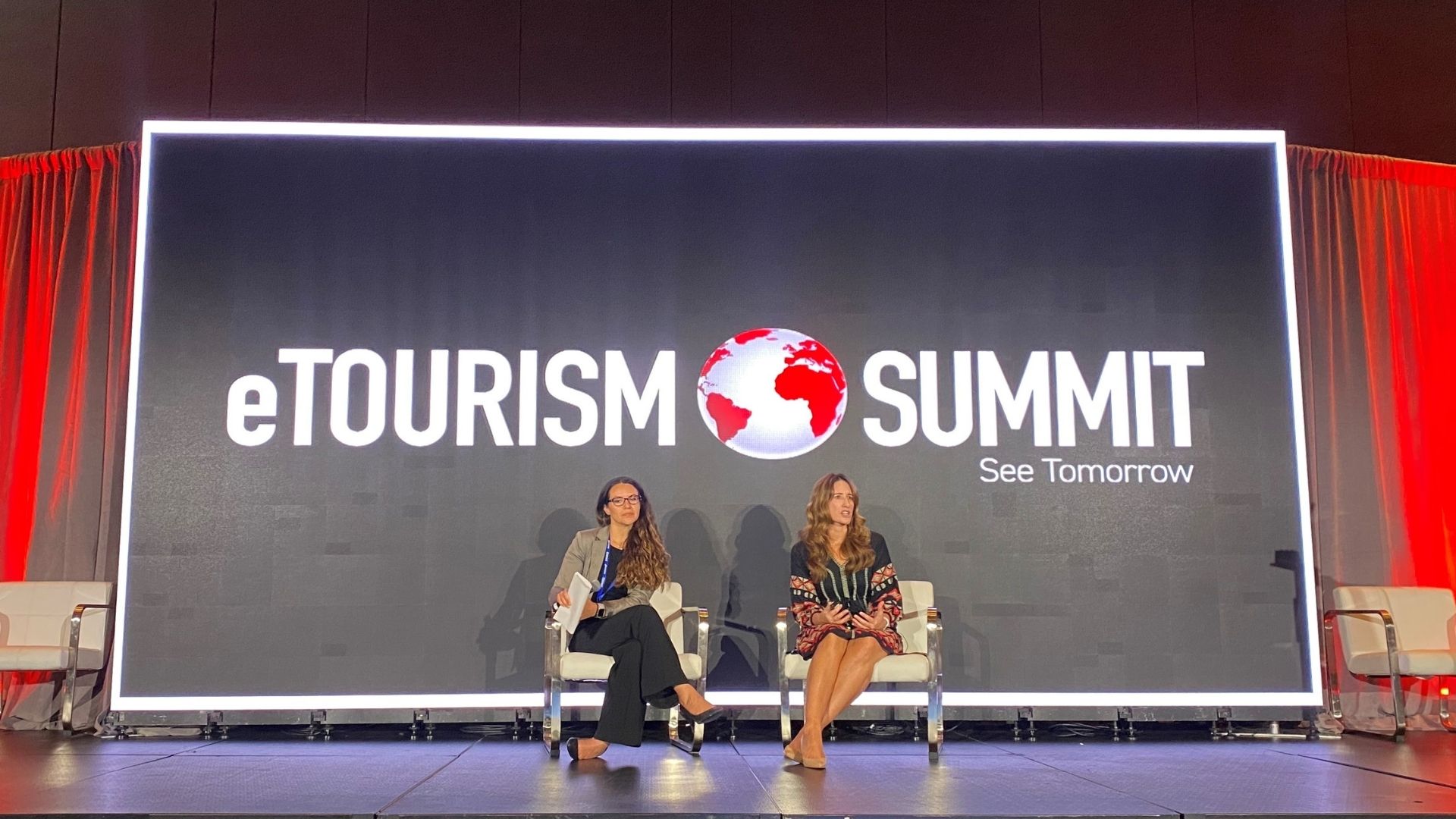After departing JFK and covering 6,689 miles in the coveted Qatar Airways Qsuite, we touched down in Doha, Qatar. The descent into the peninsular country was captivating: shorelines of beaches along turquoise waters, desert dunes and – in stark contrast – futuristic skyscrapers and state-of-the-art stadiums.

From the second we arrived in Qatar in early March on our first international business trip since COVID, a palpable energy filled the air from both Qataris and expats, who comprise 90% percent of the population. It’s a true melting pot of passionate football fans. And our assignment was equally exciting, as our client engagements with Qatar Airways and the Supreme Committee for Delivery & Legacy will converge later this year for one of the most anticipated global sporting events – the World Cup.
There’s no way to describe the feeling of standing on football’s global stage. We visited Al Janoub Stadium, one of the eight stadiums where the FIFA World Cup Qatar 2022™ will take place this November. And it’s fascinating how local communities helped shape the development of this stadium and its counterparts.
During our visit to the Supreme Committee’s Legacy Pavilion, we learned how the organization worked with communities to understand how these stadiums could serve them after the World Cup. Al Janoub, for example, will have around 20,000 seats removed and transported to countries in need of football infrastructure to enhance social development abroad. This will leave the Al Wakrah community with a right-sized arena suited to local needs and their team – as well as a mosque, a wedding hall and a market to further connect the tight-knit community and boost local business.
Our most notable takeaway from our experience in Doha was the importance of taking the input and needs of locals into consideration at the upfront of a project and sustaining relationships with these communities. Locals are the experts – they know everything that a brand needs to know to make a positive difference. Ketchum’s core values of empathy + intelligence hinge on understanding the communities we’re working in, too, and this is particularly important from a high-level DE&I perspective. In fact, COVID-19 has driven a surge in localism globally according to research firm Kantar – and organizations that are embracing the localism trend are winning at the Cannes Lions Awards.
This inspired us to take a deeper dive to find other localization strategy examples and how organizations across the Ketchum network are integrating communities and fostering those relationships for the longer-term to help drive business results. Local relations are particularly important as we navigate year three of COVID and seek to understand consumers who have undergone changes unique to their geographies.
We tapped Ketchum client directors across a variety of industries, from Travel, Hospitality & Leisure and CPG to Financial & Professional Services and Retail, who are leading communications programs that involve local communities. And we asked them to share localization strategy examples used to better improve their practices and marketing communications. Their insights on how organizations should consider involving local communities follow.
Getting Granular to Address Community Needs
Local relations are key for many of Ketchum’s Financial & Professional Services clients. A client director representing a retail bank shared, “Our client’s mission is to bring care back into banking – and they are focusing on investing in and connecting with the community via a ‘local-first’ approach.”
That mentality is what informs and drives most of the team’s communications programming. For instance, during the pandemic (and today), the client is investing in and partnering with local organizations to build a better community, and story tells around these efforts through robust local media relations. The Ketchum team also supports the client’s partnership with a nonprofit that provides coaching, workshops and financial education to the low-to-moderate-income community. As the client director explained, “We are helping to tell stories of individuals reaching financial success with the support of local coaches through local sponsored content – to help raise awareness about the program, and in turn, help more individuals reach financial success.”
Takeaway: Establishing the investment in and impact of community programs is an important first step, and then creating a communications program that helps to highlight that impact will help to better tell your client’s story. Every community is different, and to be successful, communications efforts must be tailored to it.
Tapping into Local Pride to Foster Authenticity
Ketchum’s Travel, Hospitality & Leisure sector knows firsthand how important it is to collaborate with local communities. A client director representing a tourism-reliant destination noted four examples of how involving the community early on leads to a program’s overall success:
- Working with local travel influencers to help identify the most picturesque yet socially distanced areas in the destination to bring more attention to cities that are open for visitors;
- Engaging a local physicist to help identify the exact color of the destination’s sunshine, leveraging a local interior designer to provide tips and tricks on how to incorporate this burst of sun in your home, and partnering with local businesses to produce products in that color; and
- Including locals for inspirations in the creative development and production of a new destination brand campaign following thorough focus group testing both in the destination and in markets with high diaspora populations.
Takeaway: Involving the local community brought to life a sense of pride in how the destination is being marketed to visitors. Work to identify leaders or move makers that can serve as great local community representatives and be the local community voice – and involve them in the process from the start.
Helping Your Brand Embrace Localism
“No borders, only horizons” is inscribed on a prominent wall in Qatar Airways’ Doha headquarters. Our job as communications professionals is to help local communities see these horizons as opportunities for positive change in a difficult world. This mindset – coupled with an inside-out MarComms approach – leads to business results. It prompted Qatar Airways to continue flying throughout the pandemic to repatriate people across the globe when other airlines stopped doing so. And it can lead to your next win.
We hope these localization strategy examples inspire you to think like a local, involve the community and solve for real problems as you plan your next campaign. Ketchum Analytics is helping brands understand the mindset, buying behaviors and lifestyle values of communities. We are leveraging third party data sources and behavioral based intelligence to build and analyze audiences based on specific geographies or DMAs, and supplementing these data sources with custom surveys, message testing, ethnographies and biometric approaches.
Please don’t hesitate to reach out if you’re wondering how an inside-out approach could impact your bottom line.




